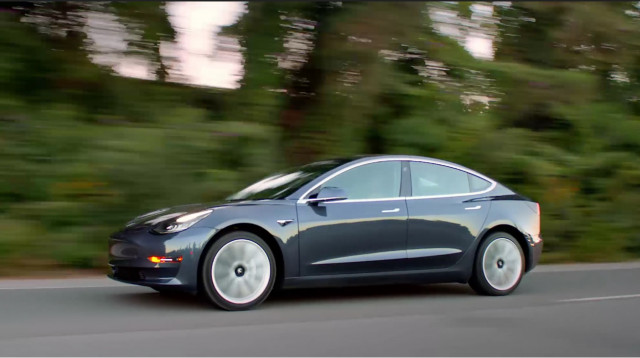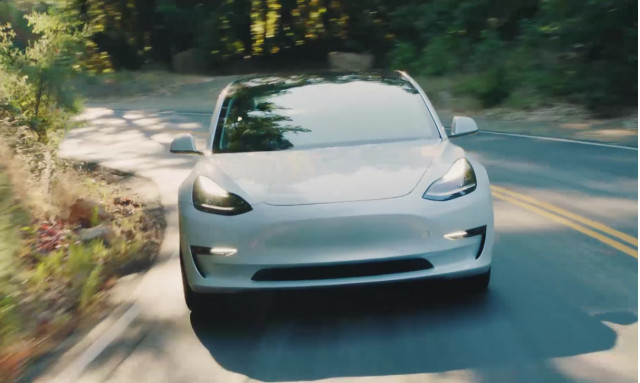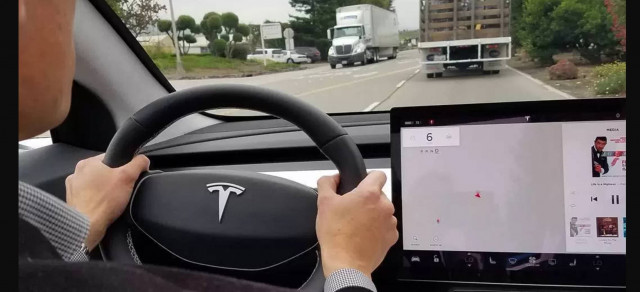Some Tesla Model 3 cars haunted by "phantom touch" and "vampire draw"
At this point, the variable build quality of early Tesla Model 3 electric cars has been well documented. One of the main issues is the "phantom touch" on the car's all-important central display.
The phantom touch is what Green Car Reports reader Jeff Southern of Atlanta suffered in his car before he invited us to drive it for our full review.
Like many Model 3 owners, Southern had to have his car's central touch screen replaced after the screen started randomly "touching" a point at the side of the screen, as described by several owners from January through this month in a post on the Tesla Motors Club forum.
That's the precise point that turns on the stereo and then cranks the volume up to max.
Recently, Edmunds reported the same problem in the Model 3 that it bought to test, as the company reported in a Tweet about the car.
The question is whether the problem is hardware related or whether it could be fixed with an over-the-air software update. The fact that Tesla replaced the whole screen in Southern's car suggest that it cannot.
Other users have reported even bigger problems with the screen, including the whole unit going dead, again a problem first noted in January but reported periodically thereafter by newer owners.
As any Model 3 driver knows, that's crucial, since the center screen controls virtually every feature of the car beyond the wipers and hazard lights. It controls far more in the Model 3 than it does in the Model S or Model X.
Green Car Reports reached out to Tesla with more detailed questions on the Model 3 screen issue, but has not succeeded in getting any comments on the record from the company.
Another problem that haunted a few Model S owners, known as "vampire draw," may be rearing its head on the Model 3 now, too.
One user on the Tesla Motors Club, who seems to be an employee or close to the company, speculates that the vampire draw is related to the cars never going to sleep, as the company races to compile real-world data from Model 3 drivers in an effort to fix bugs in early cars.
Some users have reported losing as much as 15 to 20 miles a day, as the car sits parked. That seems extreme, even in warm weather.
Model 3s reportedly will enter a low-power mode and stop transmitting reliability and driving data to Tesla once the battery drains down to 5 percent.
Other concerns reported by owners include a hood mounted too low, wildly variable panel-fit lines, and creaks and rattles inside the cabin—all of which we experienced in our drive of Southern's car.
Thus far, owners report that their local Tesla Service Centers have been as responsive as possible to the problems—Southern's screen was replaced in a day—but worry that with increasing volumes of Model 3 deliveries, those centers may be challenged to keep up the pace.
As always, owners' forums are often the best source for the latest and most up-to-date information.



Email This Page